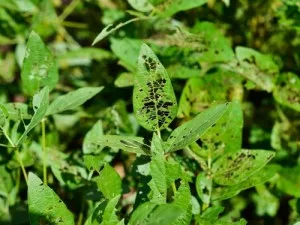In the form of drones and machine learning, a new method has been developed to determine crop health.
A study published in Computers and Electronics in Agriculture used neural networks classify crop defoliation. Disease, stress, animals, insects and pests can cause defoliation. If not monitored, whole crop fields can be damaged, lowering productivity.
The Ohio State University researchers behind the study focused on soybeans and what caused defoliation in those fields. Since soybeans are in such high demand, it is difficult for farmers to keep up with the production. In 2021, more than 90 million soybean crops were planted.
"Soybeans are one of the most important agricultural products in the U.S., whether it be in exports or in food products," says Zichen Zhang, author of the study.
In 2020, Zhang and his team analyzed the soybean fields using a drone to take aerial photographs. The project resulted in 97,000 photos that could be labeled healthy or defoliated.
The research found that 67,000 of soybeans were deemed healthy, whereas 30,000 were prone to defoliation, a ratio greater than 2-to-1. They used multiple learning algorithms' ability to correctly infer which crops were defoliated and which were healthy soybean crops.
However, none of the learning classifiers were precise enough in their classification, so the research team created Defonet, a neural network that will classify defoliation, for the study.
"It has better performance than currently available tools in accuracy, precision and efficiency," says Zhang.
This study one of to employ non-invasive technologies to characterize large-scale crop health. If Defonet is adopted by other researchers, the system could help assess the likelihood of a drop in production because of defoliation.
"In the coming years, we're going to have to increase food production substantially in order to just meet the demand," says Christopher Stewart, co-author of the study. "The idea behind digital agriculture is using computer science and other technologies to make sure that each planted seed is grown as effectively as possible."



![[Technology Corner] Autonomy & Robotics Take Center Stage](https://www.precisionfarmingdealer.com/ext/resources/2026/01/12/Autonomy--Robotics-Take-Center-Stage.webp?height=290&t=1768253759&width=400)


